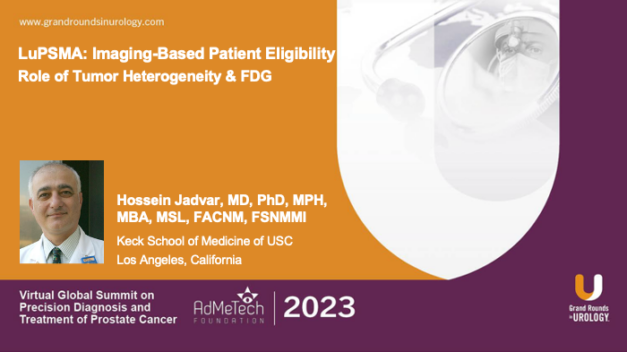LuPSMA: Imaging-Based Patient Eligibility Role of Tumor Heterogeneity & FDG
Hossein Jadvar, MD, PhD, MPH, MBA, MSL, FACNM, FSNMMI, discusses imaging-based patient eligibility for Lutetium-177 Prostate-Specific Membrane Antigen (177Lu-PSMA) and the role of tumor heterogeneity and 18F-fluorodeoxyglucose (FDG) in treatment failure. He begins by reviewing a study on the prediction of time to hormonal-treatment failure in metastatic castration-sensitive prostate cancer with FDG positron emission tomography/computed tomography (PET/CT) and another study assessing the association of FDG PET/CT with overall survival in men with metastatic castration-resistant prostate cancer (mCRPC).
Dr. Jadvar addresses mCRPC tumor heterogeneity within and across tumors and prediction of discordance between Gallium-68-PSMA-11 therapy and FDG, citing the LuPSMA trial, the TheraP trial, and the VISION trial. He then shares data on PSMA heterogeneity in mCRPC related to circulating tumor cells (CTC), metastatic tumor burden, and response to targeted RLT.
Dr. Jadvar shares the European Association of Urology (EAU)-European Association of Nuclear Medicine (EANM) consensus statements that PSMA PET demonstration of PSMA expression should be mandatory before treating with 177Lu-PSMA RLT. He then shares patient case studies illustrating the pros and cons of FDG PET/CT in PSMA radiopharmaceutical therapy (RPT).
Dr. Jadvar concludes by emphasizing that PSMA PET should be mandatory before PSMA RPT. He reminds practitioners to carefully consider what is optimal vs. what is required vs. what is practical.
Read More
